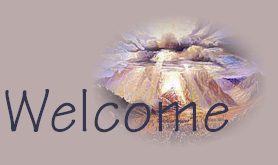
Exod. 24:4-6 The covenant was completed. Moses acted as a mediator between GOD and His people. Dividing the blood signalled the two aspects of the covenant: the blood sprinkled on the altar symbolized the mercy shown by GOD by accepting the offering; sprinkling it on the people united them to GOD.
Exod. 24:4 The twelve columns represented the twelve tribes of Israel, with which GOD had made the covenant.
Exod. 24:7 See section 4 of "TRUTH IN ACTION" at the end of Exodus.
Exod. 24:9-11 The chief leaders of Israel were permitted to have a vision of GOD (theophany), which would solidify their role as leaders.
Exod. 24:11 Didn't extend (KJV-laid not): Signified that they survived the experience of intimate contact with GOD (see 19:21). The covenant was sealed with a banquet.
Exod. 24:12 It was traditionally thought that the tables of stone contained the Ten Commandments, but this isn't clearly affirmed. If this were so, then this passage would chronologically precede chapter 20.

Exod. 25:1-31:18 GOD'S WORSHIPFUL PRESENCE: RULES FOR THE TABERNACLE AND PRIESTS (HBH) Once Yahweh and His people Israel had concluded the covenant, arrangements had to be undertaken for the Great King to live and reign among them. Therefore elaborate instructions follow for the building of a tabernacle (or worship tent) and its furnishings (25:1-27:21; 30:1-31:18) and for the clothing and consecration of the priests (28:1-29:46). The priests, of course, functioned as the covenant mediators. They offered sacrifices on the nations' behalf and presented other forms of tribute to the Great GOD and King.
Exod. 25:2 The offering should come from the heart as a voluntary contribution for the worship, and not as a forced tax.
Exod. 25:8 See section 3 of "TRUTH IN ACTION" at the end of Exodus.
Exod. 25:9 The tabernacle was a sacred tent or rustic temple destined to serve as a dwelling for GOD. For this reason, GOD gave the Israelites the design, or exact instructions, for its construction and endowment.
Exod. 25:10 The ark was a wooden chest 112.5 cm long by 65.7 cm wide and high. It symbolized the presence of GOD, the place where he would meet and speak with Moses (v.22).
Exod. 25:17 The mercy seat was the cover of the ark, a solid gold plate, with two cherubims (winged beings) placed face-to-face on each end. It symbolized GOD's throne. On the occasion of the expiatory sacrifice, the priest sprinkled blood over and in front of the mercy seat (Lev. 16:14,15). According to an ancient story it was made in the form of a cross. Centuries later, GOD was sacrificed for his people.
Exod. 25:18 Cherubims were angelic beings associated with the care and protection of GOD's throne.
|
Exod. 25:18 cherubims, keruvim, plural of keruv; Strong #3742: A celestial being who is represented by gold sculpted figures over the Ark of the Covenant. The word Keruv could be related to an Akkadian verb that means "bless, praise, worship". Keruvim is mentioned some 90 times in the Old Testament, in Genesis, Exodus, Numbers, I and II Samuel, I and II Kings, I and II Chronicles, Psalms, Isaiah, and especially in Ezekiel (more than 30 times). The Keruvim were evident from Adam until the times of Ezekiel. See their description in Ezekiel 10. The idea that keruv means "guardian angel" persists (Ezek. 28:14). A keruv protects, as is affirmed in Exodus 25:20. (Compare the two angels, one in front of the other, who covered and sheltered the LORD of glory while his body lay in the sepulcher, (John 20:12). |
Exod. 25:23 The table was a symbol of the power of GOD as provider of food for his people. It measured 90 cm long, 45 cm wide and 67.5 cm high.
Exod. 25:30 The bread of the proposition (shewbread): Symbol that represented Christ as the bread of life.
Exod. 25:31-40 The candlestick served as a symbol of GOD, as the light that guided the children of Israel during the exodus. It was also an anticipation of Christ, who is our light. It was made with approximately 38 kg of gold.
Exod. 26:1,2 The first group of curtains were 12.60 meters long by 1.80 meters high, and they were made with costly fabrics.
Exod. 26:14 These two groups of curtains were protected by another two groups of curtains: the outer one of rams' skins and the inner one of badger skins.
Exod. 26:15,16 the boards for the tabernacle were 4.5 meters long by 67.5 cm wide.
Exod. 26:26 The bars were 15 cross-pieces that served to support the boards.
Exod. 26:31-34 The veil was an inner curtain made like those of the first group (see verses 1,2) that divided the 252 meter structure into quadrants. It was placed 9 meters from the door of the tabernacle.
Exod. 26:33 The Most Holy: The space found behind the veil, denominated in Latin "sancta sanctorum".
The tabernacle would provide a space where GOD would dwell in the midst of his people. The term tabernacle refers at times to a tent, which included the Holy Place and the Holy of Holies, covered with decorative curtains. But in other places it refers to entire complex, which included the atrium in which the tent was raised.
This diagram shows the relative positions of the utensils of the Israelite tabernacle. The tabernacle is expanded here for greater clarity. See also the diagram, "The furniture of the tabernacle" (37:1).




Home
Site Index
Bible Index
Kingdom Dynamics
Truth in Action
Links